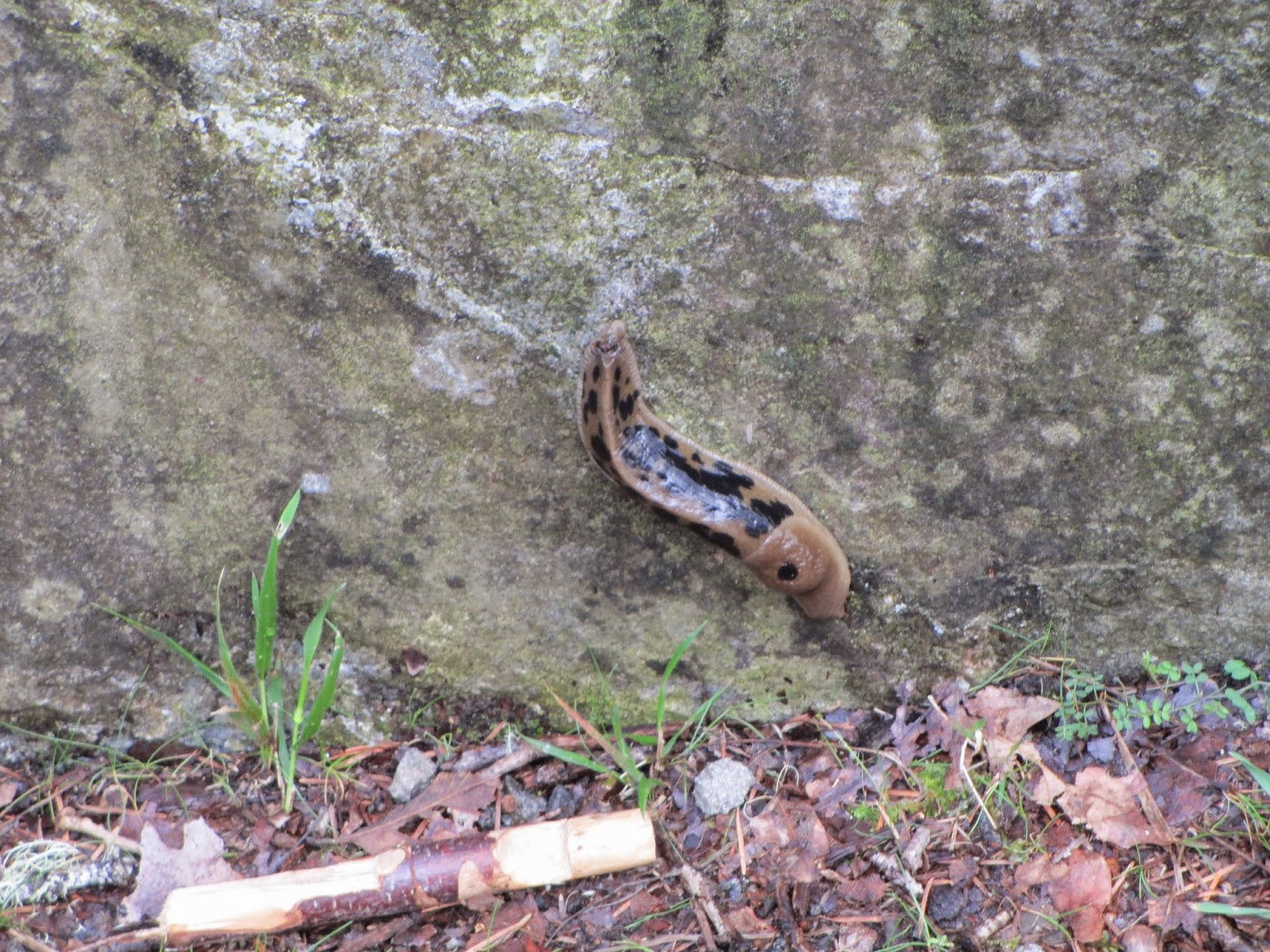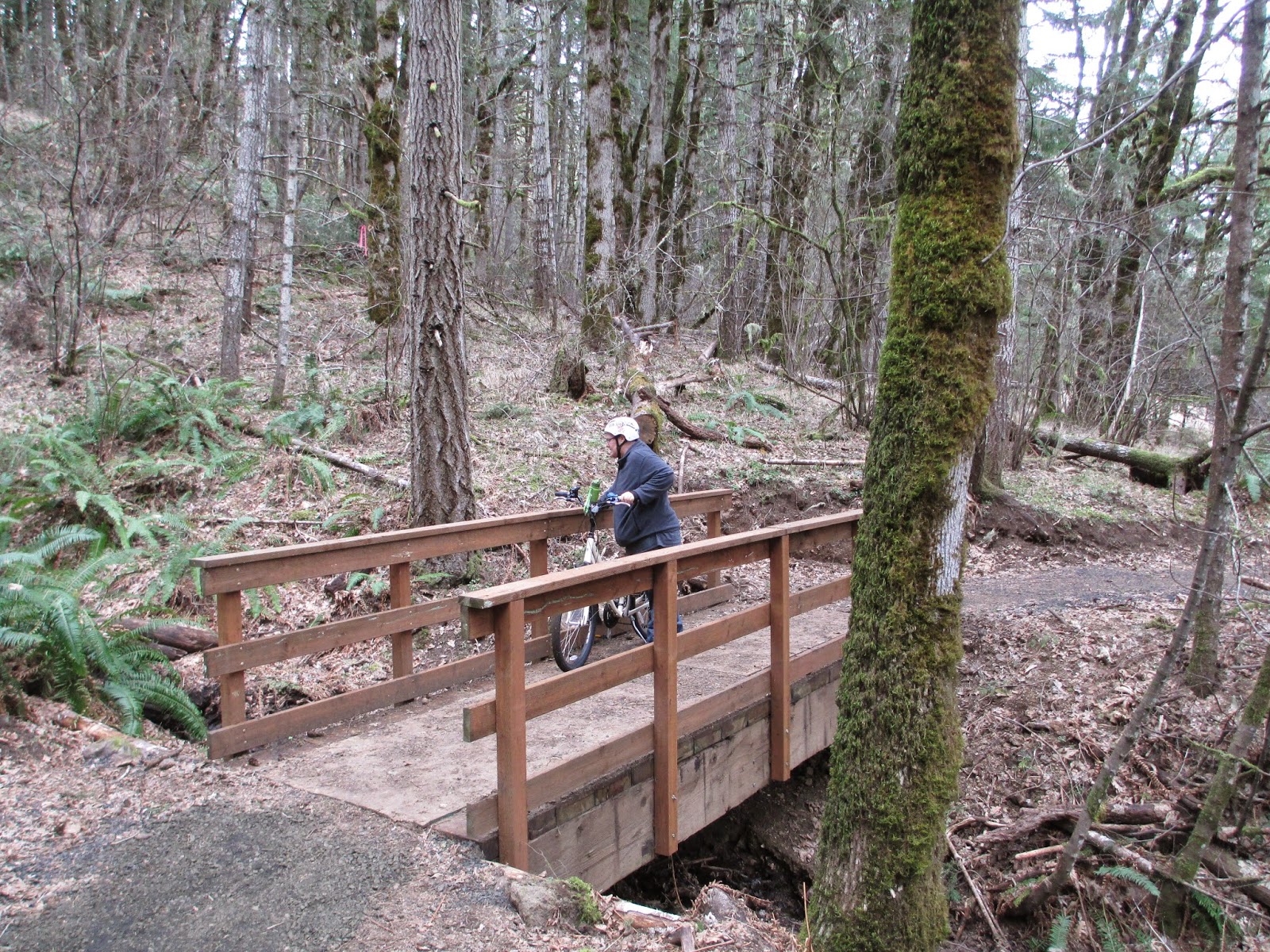I was very excited to get my Fairdale Weekender Drop frame and forks today. I've been ordering my bike in pieces each month so we can assemble mine for a lower cost with the parts I actually want for touring. Without having to eventually replace parts that come already assembled with the bike, we can order these parts separately through various online dealers offering discounts, and get them all matched up correctly from the start. By eliminating waste from parts I would eventually want to replace later anyway, this also makes it so we can still afford the AWOL Elite touring bike for Pedal Poppers.
The only problem was that my new frame had a slight ding and missing paint right in the top of the headtube where it actually matters. This made it so I could not set the headset and forks in place.
So, my much anticipated frame and fork are heading back to the shop (in Colorado) for a replacement, but it's all well and good. I don't have a lot of the other parts for assemblage yet anyway, so waiting a few more weeks is no major concern. In the meantime, I will continue to ride around town on the heavy little commuter bike I have. I will discuss that and solutions for the sore butt problem I've been having shortly.
Butt first (haha), here's a closer look at that little mar that I could have likely cleaned up anywhere else on the frame, but what a difference it makes when you need to set the fork and headset in this very spot so you can actually turn the front wheel as you ride down the road!


Notice the flattened out portion where the ding is - right where the headset needs to cinch down and hold the fork and upper handlebar and stem assemblage in place.... This needs to be a pretty perfect circle, so obviously this is beyond my steelwork bending (or hammering) skills - going to have to send it back - too bad. It's sure a pretty frame that I hope I can still get in these black and red Trailblazer colors (kind of difficult to find this 2014 frameset in my size) - this was my tribute to Oregon and my mom - the biggest Blazer fan I know. She has supported me through grad school, helped me with finances whenever I found myself in dire straights, and has inspired me to get in shape, since she, at nearly 70 years of age, looks great and exercises daily. Pedal Poppers will have a gunmetal grey bike with orange highlights, symbolic to some degree of our Oregon State University colors.
So about that bike seat... I tested the Specialized Romin Evo seat that I wrote about a couple of weeks ago. I thought it would work for distance cycling, helping me with my tailbone suffering. And it did just that! The Romin solved this problem with a tailbone cutout, but even with my sitbones positioned just right on this 143 mm minimally padded seat, its pointed wings at the periphery of the seat started causing saddle sores when we amped up our riding to 15 miles per trip.
So, while this is a great lightweight seat, it wasn't the one for me, and back to Peak Sports we went.

Since the Specialized Romin seat was otherwise great, I looked for another Specialized seat with a similar design but without the winged points. And there it was, the woman's mountain biking version (same cost - $100 retail) looked like just the right fit. I'm not sure why some seats are called women's seats and some are called men's seats, especially when they have the same cutouts for the prostate or perineum region and same sitbone measurements, but whatever. No time or space to be nitpicky over gender marketing when a sore ass is keeping me from having so much fun biking! So, the saddle I am now testing has slightly more padding, a more rounded periphery, and pink and purple bunnies embossed on the cushioning... All kidding aside, the new saddle has an attractive scrolling pattern suitable for anyone. Here it is - the Specialized Ariel, and when I positioned it directly under the Romin in the shop, the dimensions were nearly the same, no wider or longer throughout the whole saddle.

Going through this process, Pedal Poppers and Sprocket hope to be of some help to newer riders like ourselves. What we've pretty much discovered is that if you don't want a giant cruiser-fatty-ass seat, you have to accept that bike saddles just aren't the same as they were in the 1980s, but then again, neither are our butts. It's apparent that the thinking behind bike saddles these days is likely that most bikers are now wearing appropriate cycling clothing. I used to think this was unnecessary poppycock that simply allowed biking to become a more expensive sport while making every cyclist appear that they recently raced the Tour de France. I mean, I never wear a full baseball uniform when I go out and toss a ball to my nephew. I also don't put on caped crusader's tights even when I'm feeling a bit superheroic (or do I?).
So, what happened to jumping on your bike in casual jeans and a t-shirt and cycling 20 miles to the next town to pay a short afternoon visit to Grandma and Grandpa? What happened to taking a spin and letting that jaunt turn into a few extra miles into the countryside? Well, what happened is that the modern bicycling philosophy assumes most riders are wearing the correct modern cycling gear. With that in mind, the newer seats require padding to be worn when the cyclist rides over 15 miles. This helps to cut weight in the seats, and goes along with other lightweight modern components that allow for better power to weight ratios, which in the end, allows you to more easily log those miles on that bike of yours. With this in mind, if you're wearing the right gear, you don't need heavy seat padding. The nicely padded cycling shorts suited to your own body make fatty seats on road bikes unnecessary.

So, to accompany the new saddle, it's advisable that I get that needed padding from some good chamois shorts. The chamois padding is a dense, lightweight foam, fitted tight to the body where directly needed. While this might not be the look I want to go for at my current weight as I get in shape, these can go beneath my regular shorts. To get an idea of what these look like for new cyclists, you've likely seen many other fit cyclists wearing these, but might have been put off by them for yourself for one reason or another. Believe me, aside from contorting men's bits and bobs into mysterious shapes that attract lengthy gawking and snickering from even the most genteel among us, they have other useful purposes.
For those still trying to bike themselves to fitness without having to purchase and wear these, keep in mind that they do have an actual purpose that might save your arse. And for those less knowledgeable about colors that work - black is better at masking the bulge or creases thereby alleviating some of the lengthy stares you'd otherwise get when stepping into the local coffee shop during your bike outing. If you are well-endowed and don't mind the looks, then go with white, by all means. Here is a pic of a basic short with chamois lining. Prices vary on these, but finding shorts, like these from Pearl Izumi, with high ratings at a minimal cost is not unreasonable.
Chamois linings also vary from short to short, but below is a nice illustration from 4motion on how chamois pads work, fitting right into that circular-sewn crotch-region of cycling specific shorts.
There are many companies making chamois shorts, some with short and shirt sets, some as bibs and even longer pants for cooler weather. There are several that even include looser cargo-type shorts to go over the skin-tight short. The idea is that the padding stays close to your body where you need it while matching up to your saddle. In many cases, these shorts also allow moisture wicking, breathability, coolness, and protection from the hard bike saddle and friction chafing to the nether regions.
The advice I've seen on these is to wear them right next to the skin - NEVER put them over your underwear, or you defeat the purpose of these. In addition, you can also lube your body or the chamois pad directly where chafing occurs. Chamois cream type products exist under about a hundred or so brand names. I recall my Grandpa using Bag Balm for just about everything like this, sometimes accompanied with corn starch patted lightly over the Bag Balm at those areas. Let me just say, that old generation was resourceful when having to walk twenty-plus miles to work sometimes in thick chafing denim. So don't overlook their inexpensive solutions. I am guessing Bag Balm is still around in modern times because this old solution still works very well - something I can personally attest to. Thanks to recommendations from my old Gramps, I've never as an adult had a medicine cupboard without it. In this case, Bag Balm is a reasonably inexpensive solution though I will likely also give the chamois specific creams like Assos or Chamois Butt'r EuroStyle a try in the hopes of better preserving expensive cycling shorts.

As for taking care of those new cycling shorts, I've read that most cyclists hand wash them after each cycling venture in cool water and mild soap (Dr. Bronner's Castile Soap or Murphy's Oil Soap). This prevents bacterial build-up - you must do this after every cycling outing. Then machine wash after every five uses to keep the cycling shorts and chamois pad from more rapid deterioration caused by harsher laundry detergents and more frequent machine laundering.
That's all for now. Hope this helps the other new cyclists out there.
Catch you all later,
Sprocket


 This trail is really an extension of Cardwell Hill Drive and is a stunning well-graveled hike with parking lots at both ends, and if you loop back toward the east parking lot, your thighs are going to be burning having to go steeply back up hill for about a mile! If you're mountain biking, this is going to be a decent work-out. It turns out to be about a five to six mile hike down the gated-off Cardwell Hill Drive (which is a continuation of Oak Creek Drive as it turns off toward the McDonald Dunn Forest trailhead area we usually visit).We saw no other people during this hike, so it was pleasant and serene.
This trail is really an extension of Cardwell Hill Drive and is a stunning well-graveled hike with parking lots at both ends, and if you loop back toward the east parking lot, your thighs are going to be burning having to go steeply back up hill for about a mile! If you're mountain biking, this is going to be a decent work-out. It turns out to be about a five to six mile hike down the gated-off Cardwell Hill Drive (which is a continuation of Oak Creek Drive as it turns off toward the McDonald Dunn Forest trailhead area we usually visit).We saw no other people during this hike, so it was pleasant and serene.



































































